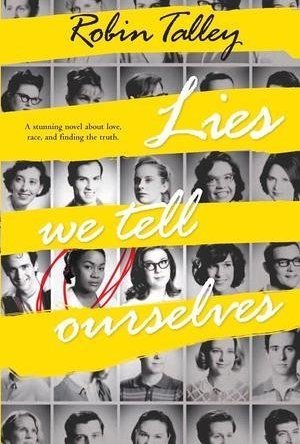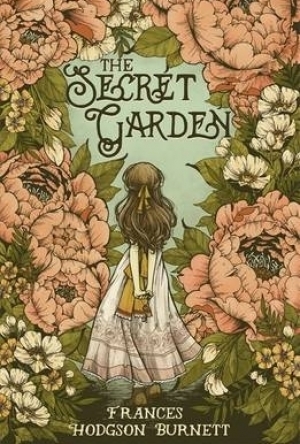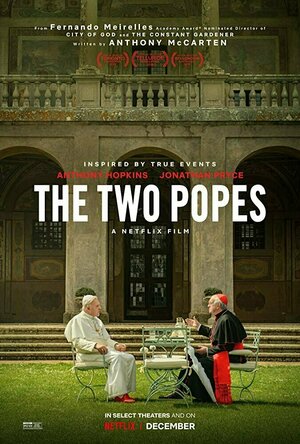Hazel (1853 KP) rated Lies We Tell Ourselves in Books
Dec 17, 2018
<i>Lies We Tell Ourselves</i> by Robin Talley is a realistic tale about the beginning of the integration of coloured people into white schools in late 1950s America. In Virginia it is 1959 and ten Negros are beginning their first day at Jefferson Highschool. The experience is narrated from one of the ten, Sarah’s, perspective. In other parts of the novel the voice changes to that of Linda, a particularly nasty white girl, who is one of countless students opposed to integration.
Although many young people will have been taught about the black civil right movement it is still shocking to read about the horrible things they had to endure. By writing in the first person, Talley encourages the reader to try to understand how they would feel in a similar situation. Sarah and her friends instantly become the victims of verbal and physical abuse that members of authority turn a blind eye to.
To Sarah, Linda is a nasty spoilt bully who, although does not join in with the taunting and abuse, is as bad as the rest of them. Through reading Linda’s account it becomes clear that her behaviour has a lot to do with her home life, in particularly with her father’s attitude towards her. After being forced to partner Sarah for a French project Linda begins to question why there is so much emphasis on skin colour, however not wanting to be shunned by her own friends she keeps these thoughts to herself.
Sarah is also struggling to come to terms with her sexual preference for girls. It has been drilled into her that these thoughts are a sin. She hides her true feelings from everyone and constantly berates herself mentally for being “unnatural”. But it turns out she may not be the only one with these thoughts.
The lies referred to in the title are not the blatant or harmful lies but rather the lies the characters believe or even want to believe. Each chapter begins with a lie that reflects what is occurring in the novel at that time; for example “There’s no need to be afraid” and “I don’t care what they think of me.” This is an interesting way of telling the story as it emphasizes Sarah’s determination to keep going despite what she is subjected to. It also reveals the mental struggles she faces. On the other hand the lies disclose Linda’s conflicting feelings towards the South’s current situation and segregation laws.
Although not a religious novel, each part begins with the title of a Christian hymn. It was the norm for everyone to go to church and, despite the separate churches, was something black and white people did. Sarah and Linda have faith in God yet they both use the bible’s teachings for opposing arguments. The religious aspect also highlights Sarah’s self-hatred and belief that she has fallen into sin.
Unfortunately in today’s world there are still issues with racism and homophobia however after reading <i>Lies We Tell Ourselves</i> it is evident that these situations have vastly improved, at least in the Western world, since the 1950s. Without children such as Sarah going through these horrible experiences nothing would have changed. There would still be separate schools, slavery and inaccurate opinions about race inequality. America has a lot to thank these brave students who were the first to create mixed race schools.
Overall this is a brilliant book. Well written and realistic, it really draws the reader in to the characters’ stories. Although <i>Lies We Tell Ourselves</i> is a work of fiction, it is historically accurate and can teach a lot about America’s history to young adults today.
Darren (1599 KP) rated Z For Zachariah (2015) in Movies
Jul 6, 2019
Writer: Nissar Modi (Screenplay) Robert C O’Brien (Novel)
Starring: Chiwetel Ejiofor, Margot Robbie, Chris Pine
Plot: In the wake of a disaster that wipes out most of civilization, two men and a young woman find themselves in an emotionally charged love triangle as the last known survivors.
Tagline – What remains after the world ends?..
Runtime: 1 Hour 36 Minutes
There may be spoilers in the rest of the review
Verdict: Starts Promising, Ends Slow
Story: Z for Zachariah starts as Ann (Robbie) goes about her daily routine in a disaster hit world, living on a farm with her dog, she does everything she can just to survive, until she sees a stranger wondering through the mountain range, John (Ejiofor) who was underground during the incident.
Ann and John start trying to put a life together using his knowledge of engineering to help with the work around the farm until another stranger, a miner Caleb (Pine) turns up on the land, which starts to create a new problem, a love triangle.
Thoughts on Z for Zachariah
Characters – Ann is a farm girl that has been with just her dog since the incident that has wiped out most of the population, she is keeps the land together preparing for the harsh winters which she barely made it through before, she does have the lonely feeling until she meet John and Caleb who help show her life after people. John I a scientist who was underground when the incident happened, he decides to come to the surface in search of a life up there, which sees him stumble into Ann’s land, the two might have difference of opinions when it comes to religion and science, but they do try to help make a life together, he uses his skills to help make the farm work easier. Caleb is a miner that ends up on the land, he becomes competition for John in search for attention from Ann, being much more laidback about life and where it will go next.
Performances – The performances are the highlight of this film, Margot Robbie, Chiwetel Ejiofor and Chris Pine all give us wonderful performances, showing the difficult moments they would have been through in this world, we see guilt and hope coming through strong through the performances.
Story – The story follows three people living in a world destroyed by an incident (which we never learn what it is) that has left most of the population dead, with most of land being unliveable and then we get thrown into a love triangle. The side of the story that explores the world that has been through an incident because we start to explore what could have caused it taking science version religion, as soon as we start getting to the love triangle things just get dragged down because we don’t need this, as we do have the complex side to the story already in place.
Sci-Fi – The world that we enter shows us the sci-fi side of the film by seeing just how difficult surviving would be in this world, only it would be nice to have learnt what happened to cause the incident.
Settings – The film does take us to a beautiful location which give us stunning shots, making it a lovely place to live in a world like this.
Scene of the Movie – The water system.
That Moment That Annoyed Me – Not learning what has happened to the world.
Final Thoughts – This is a film that starts so well, only to fall into a bland love triangle which only drags all the potential away from this story.
Overall: Doesn’t live up to potential.
Rating
The Bandersnatch (199 KP) rated The Secret Garden in Books
Nov 7, 2019
The story starts at the turn of the 20th century and follows Mary Lennox, a sickly and unloved child born abroad and brought back to her wealthy uncles house after a Cholera outbreak leaves her an orphan. As Mary gets used to her new isolated home she learns of a private walled garden once owned by her aunt forever locked by her uncle and hears crying which eventually leads to her cousin Colin. With Mary telling Colin stories about the moor, her friend Dickon and the secret garden she has access to, Colin is inspired to join her outside and as such both children improve beyond belief.
The books working title was Mistress Mary in reference to the English Nursery Rhyme Mary, Mary, Quite Contrary. Parts of the book was written during Burnett's visits to Buile Hill park, Maytham Hall in Kent, England. She'd lived there for a number of years and the garden was cited as influence for the book. Burnett herself kept an extensive garden however its noted besides the garden Maytham hall and Misslethwaite Manor are physically very different.
Having been marketed to both adults and children the reception may have been affected. The book was not as celebrated as Burnett's other books during her lifetime and paled in comparison to the popularity of her other books. The books revival could be traced by an almost complete eclipse at the time of Burnett's death in1924. With the rise of scholarly work in the past twenty five years the book has risen in popularity and prominence. Its often noted as amongst the best books of the 20th century. It ranked 51 in the Big Read (BBC Survey), was named amongst the Teachers top 100 books for children in 2007 and in 2012 ranked 15th in the all time children's novels in a survey published by School Library Journal.
There have been Six movies (1919, 1949, 1987, 1993 and 1994), a TV show (1975), a Musical (1989), an Anime TV series (1991), an Opera (2013), Even a colouring book published (2013) from the book each one with various degrees of popularity and success. There will be a new 'The Secret Garden' movie which is being produced by David Heyman and Rosie Alison with the Production company Heydey films and Studiocanal. Both Colin firth and Julie Walters are set to star as Mrs Medlock and Archibald Craven and the release date will be the 17th April 2020....I am very excited to go see it.
The Author is Francis Hodgson Burnett and her bio segment is in last Tuesdays book club on The Little Princess if you would like to read it.
MY OPINIONS
I came across the book after seeing the 1993 movie when I was 9/10 years old. I went looking for the book bought it and started reading. I really really like the book and I agree that the theme of rejuvenation and regeneration definitely runs through the book. I love this book and definitely will be reading it to my future children. I give this book 8/10.
Darren (1599 KP) rated The Two Popes (2019) in Movies
Dec 20, 2019
Story: The Two Popes starts with the death of Pope John Paul II, the Vatican must elect a new Pope, bring the Cardinals from around the world together to go through the voting system, one the world is waiting to hear the news. Cardinal Jorge Mario Bergoglio (Pryce) and Cardinal Joseph Aloisius Ratzinger (Hopkins) are the favourites to wise to the spot, with Ratzinger becoming Pope Benedict.
Jump forward to 2012, Pope Benedict is involved in a scandal, which sees Jorge return to Rome hoping to be granted his retirement. Pope Benedict refuses his request, as the two clash on their beliefs, with Jorge wanting to see the church move to the future, while Pope Benedict believes the church should never change.
Thoughts on The Two Popes
Characters – Cardinal Jorge Mario Bergoglio is from Argentina, he has always bought the people together, he sees the church needing to not only let the future in, but embrace the changes they could never have considered because of their beliefs, he is one of the two challengers voted for to become the next Pope before stepping away from the votes. Years later, he wants to retire and isn’t getting answers, he confronts the pope, wanting to get answers, until he learns the true reason for their meeting. Cardinal Joseph Ratzinger was always meant to replace Pope John Paul II, he wins and becomes Pope Benedict. His reign will see him facing scandal before he decides to make a massive decision, one unheard of in the church. He has always believed in follow everything the church has before, which is why he gets challenged the most. We only meet a younger version of Jorge as we see his journey to rise to Cardinal in Argentina, while anybody else is usually just showing the two around.
Performances – Jonathan Pryce and Anthony Hopkins give two of the greatest performances of the year, the two legends of the industry shine carrying the film with their performances through the film.
Story – The story here follows the close election of a new Pope and how the Cardinal who stepped out of the race he never wanted to be in, is the one person that the new Pope can turn to in his time of need to save the church from a scandal which could destroy it. This is one of the most interesting and engrossing stories you will see, it shows a behind the curtain look at how the church operates, with minds that believe in a God, even if they do follow different beliefs with how they can connect to more people. We do get to learn how Jorge was given his chance in the first place, had experiences that Pope Benedict never went through to get to his position. The idea that this is a conversation between two religious men with differences, it shows how people can disagree without needing to turn into an ugly fight for no reason, they can respect their differences.
Biopic/Comedy – The biopic side of the film shows the private conversation between two religious figureheads that went through to make one of the biggest decisions in the church’s history, which is also done in a comedic way, where we get to see the two have a joke along the way.
Settings – The settings are beautiful from the country house to how the Vatican is recreated to make us believe we are right there with the Popes.
Scene of the Movie – The truth conversation.
That Moment That Annoyed Me – Not hearing the confession.
Final Thoughts – This is an acting masterclass from two of the greatest actors Hollywood has seen, it highlights the big change the church would take and how to have a conversation where both sides disagree, but accept the difference of opinions.
Overall: Acting Masterclass.
Gareth von Kallenbach (980 KP) rated The Hunger Games (2012) in Movies
Aug 7, 2019
Bringing peace to the land was a nation known as Panem which is ruled by the Capitol. Panem had once consisted of thirteen districts all providing a resource essential to the survival of its people. An uprising against the Capitol caused much anger and destruction resulting in war and the annihilation of its thirteenth district.
With the intent to make sure such an uprising would never happen again, the Capitol required each of the twelve remaining districts to abide by the rules and regulations written in the Treaty of Treason to make sure that there is peace within Panem. Once a year a lottery is held where each of the twelve districts must offer up one young man and one young woman as tributes. This must be done in order to remind the people of Panem what was lost. Each of the 24 tributes must train and then battle for survival in an outdoor arena against each other leaving only one tribute to become the victor. This is known as The Hunger Games.
“The Hunger Games” is based upon the New York times best seller written by Suzanne Collins and directed by Gary Ross who also directed Seabiscuit. The storyline follows the main character Katniss Everdeen (Jennifer Lawrence) who volunteers as tribute in order to save her younger sister from having to fight and Peeta Mellark (Josh Hutcheson) has also been randomly chosen as tribute for the twelfth district.
The movie mostly follows these two characters on their journey to the battle ground as opposed to the book where we get a little more background into each of the different districts and their tributes. Who will be the victor of the 74th annual Hunger Games?
Let me start off by stating that you do not need to have read the book in order to enjoy this film. However, the movie does follow the book very well. Fans will always have their own very strong opinions as to whether the films follow their favorite books but for someone who read the book after I watched the movie I must say I was not lost nor did I feel disappointed that I did not read it prior to screening it.
This film includes a great cast such as Stanley Tucci, Wes Bentley, Liam Hemsworth, Elizabeth Banks, Donald Sutherland and a surprisingly effectively-cast Lenny Kravitz. Along with a fitting cast the film also offers a great soundtrack, colors that fit each district and great cinematography.
It is always interesting to hear the comments of the other reviewers after the end of a movie screening. Some commented on how they pictured certain characters as a totally different type of character than what was portrayed in the book such as Cinna played by Lenny Kravitz.
One lady pictured him as a slim Asian man while my guest pictured him as a flamboyant white man with a high fashion sense. Others commented on how shaky the cinematography was. Yes, granted it does get shaky in a lot of the scenes but it only adds action to the heart pounding edge of your seat scenes. This film is a kickstart to the season of great movies to come and I predict “The Hunger Games” will reach a bigger audience as it provides elements of action, drama and sci-fi to satisfy a larger audience.
For those of you who have not read the book I do have to warn you some of the scenes and or elements of the story may be just a little too disturbing for some but is a great story nonetheless.

Next - Fashion & Homeware
Shopping and Lifestyle
App
Need a new outfit for tomorrow? Looking for homeware inspiration? For fast fashion, the Next iPhone...

eBook: The Art of War
Book and Education
App
Enjoy reading The Art of War ebook with auto-scrolling, day and night viewing modes, bookmarks,...

Medicine Of Prophet (SWS) ( Islam Quran Hadith - Ramadan Islamic Apps )
Book and Education
App
One of TOP Ranking Islamic Apps on APPLE APPSTORE ! Al-Khawarizmi is a trusted name in Islamic Apps...

Real-Deal Brides Podcast
Podcast
Wedding planning is fun, but brides and grooms need to know the "real-deal" in order to help them...

QVC iPad edition
Lifestyle
App
QVC’s iPad app is completely free and the perfect way to shop with us while you’re on the move....




